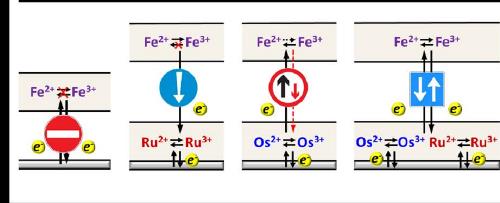
Biography
Biography: Milko E. vander Boom
Abstract
Directional electron-transfer events are the basis of many technologically important systems and biological processes. In this study, we demonstrate how the distance over which electron transfer occurs through organic materials can be controlled and extended. Coating of conductive surfaces with nanoscale layers of redox-active metal complexes allows the electrochemical addressing of additional but distant layers that are otherwise electrochemically silent. We also show that our composite materials can pass electrons selectively in directions that are determined by the positioning of redox-active metal complexes and the distances between them. These electron-transfer processes can be made dominantly uni- or bidirectional. Our design strategy involves 1) a set of isostructurally well-defined metal complexes with different electron affinities, 2) a scalable metal-organic spacer, and 3) a versatile assembly approach that allows systematic variation of material composition, structure, and electron transfer properties. We control the electrochemical communication between interfaces by the deposition sequence of the components and the length of the spacer, and therefore we are able to program the bulk properties of the assemblies.


